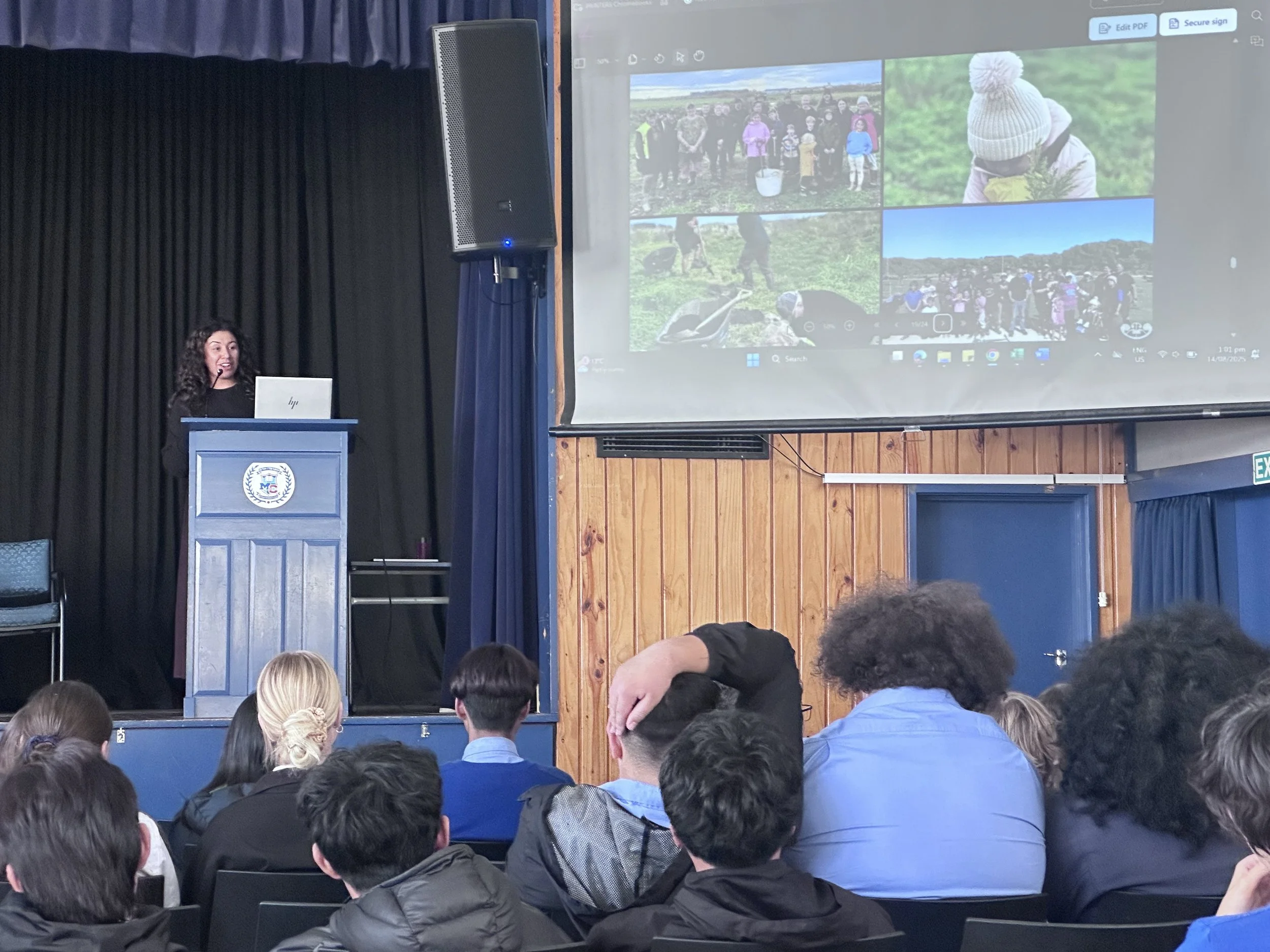Connecting A New Generation to SORT & Piriharakeke
At Year 10 level, Social Studies students are learning about how people interact with the environment, the impact of decisions made over time, and how culture and identity are shaped by place. For students at Manawatu College, the story of Piriharakeke (the Manawatū River Loop) is a living example of these ideas right outside their classroom window.
When Social Studies teacher Kirsty Tucker reconnected with our Chair — and former Manawatu College student — Irene Wakefield, it became clear that sharing the awa’s story would be a powerful way to bring their learning to life.
Irene Wakefield speaks to Year 10 students at Manawatū College
Connecting Story and Place
In her kōrero, Irene focused not only on the ecological impacts of history but more deeply on the mauri of the awa — the life force that connects river and people. Many students already knew of the waterway and the “red shed,” but hadn’t yet connected the dots between its history, its current state, and the opportunities they now have to contribute to its restoration.
Using then-and-now imagery and a bird’s-eye view map, Irene helped the class see what had changed over time, and how those decisions had shaped the awa they know today. She spoke about developments along the river verge, including Te Awahou Nieuwe Stroom, as examples of how people can now connect positively with the awa. These are not just amenities — they are signs that restoration is a worthy investment, and that spending time on and around the awa contributes to strengthening its mauri.
To close, Irene shared a kiwaha gifted by Robin Hapi:
“Ka Manawatū te awa, Ka manawa ora te iwi.”
When the river is in good heart, the people are in good health.
This locally held expression speaks directly to the heartbeat of SORT — that the wellbeing of our awa is inseparable from the wellbeing of our people.
Resonance in the Classroom
The impact was clear. While students absorbed the kōrero quietly, the reflections that followed with staff showed how deeply it landed. Teacher Kirsty Tucker later shared:
“Thank you for coming in yesterday. The staff were really impressed and I had a number of students tell me that they liked the way you spoke and that they learned a lot. I had a really good debrief with my students after, discussing what you shared and how it linked with what they are learning in class.” — Kirsty Tucker
What Comes Next?
This kōrero is just the beginning. SORT now has three events in the pipeline that will bring significant numbers of students down to Piriharakeke — to plant, weed, and beautify the river loop together. This is more than a classroom exercise: it’s the start of a new generation joining forces with SORT to restore both the awa and its place in the life of Te Awahou.
At the heart of this collaboration is Kylie Kauri, Leadership Coordinator at Manawatū College. Kylie is championing the connection between rangatahi and Piriharakeke, ensuring the classroom learning flows naturally into action on the awa.
“Connecting our rangatahi with Piriharakeke is invaluable for strengthening identity, belonging, and environmental stewardship. The upcoming weeding and planting days provide a meaningful way for young people to contribute to restoration of their local environment while deepening ties to their community and whakapapa.”
By working together, SORT and Manawatū College are creating pathways for rangatahi to step into their role as kaitiaki — not just learning about the awa, but actively restoring its mauri.


